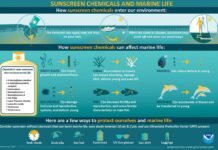Blanket rejection of GMOs might not be, either. Consider this imminent biotech project: the British company Oxitec is awaiting approval to release millions of genetically modified mosquitoes in Florida — insects engineered to pass fatal genes on to their offspring. If successful, this project could quash mosquito-borne diseases worldwide. That’s huge. In sub-Saharan Africa, a child dies of malaria every thirty seconds. In Hawai‘i, our prized honeycreepers face extinction; as the temperature rises with climate change, so does the range of mosquitos infected with avian malaria and pox. Exterminate these pests and we might save endangered native birds and ourselves.
But what are the long-term ecological consequences? Transgenic mosquitos have been released before, but nothing on the scale planned for Florida. Nationally renowned “Science Guy” Bill Nye sternly critiques claims that existing GMOs have proven safe after twenty-odd years of trial. Subtle effects might take many generations before becoming obvious, he says. How do GMOs impact soil microbes and pollinators? How do they affect their ecosystems? This line of questioning parallels the Hawaiian worldview, in which everything is interrelated.
“Akua [gods] gifted us with this place. For thousands of years Hawaiians didn’t just survive here, we thrived,” says Atay. “All I’m saying is, back up. Pause. Can you achieve what you want without polluting our resources? Prove to me GMOs cause no harm.”
Regardless of the fate of Maui County’s GMO moratorium, biotechnology is already part of our lives. We owe it to ourselves to study up.
Maui GMO Moratorium Proposal
 Temporary Moratorium.
Temporary Moratorium.
1. It is unlawful for any person or entity to knowingly propagate, cultivate, raise, grow or test Genetically Engineered Organisms within the County of Maui until such time that the terms of the “Moratorium Amendment or Repeal” (Section 6, below) have been met.
2. Subsection (1) of this Section does NOT apply to:
(a) the propagation, cultivation, raising, growing or testing of GE Organisms that are in midgrowth cycle when this chapter is enacted;
(b) GE Organisms that have been incorporated into any food or medicine in any manner already prepared for sale for human or animal consumption;
(c) any licensed health practitioner who provides diagnosis, care, or treatment to any human patient using products containing GE Organisms; and (d) any fully accredited college or university that engages in non-commercial scientific research, medical research, or education using GE Organisms, provided that such activities are conducted under enclosed indoor laboratory conditions, with the utmost precautionary measures to prevent accidental release of GE Organisms into the outside environment.





